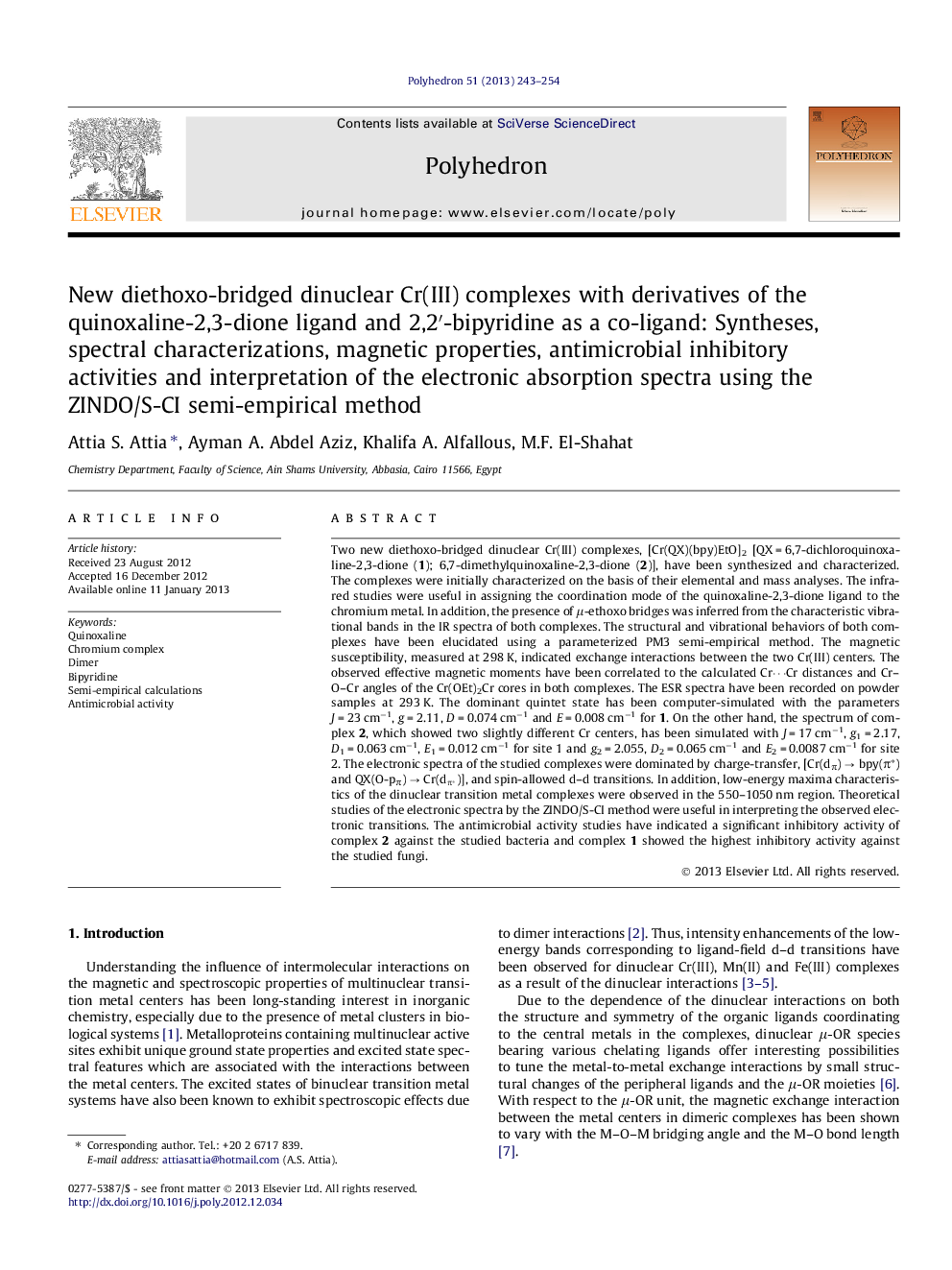| کد مقاله | کد نشریه | سال انتشار | مقاله انگلیسی | نسخه تمام متن |
|---|---|---|---|---|
| 1337171 | 1500288 | 2013 | 12 صفحه PDF | دانلود رایگان |

Two new diethoxo-bridged dinuclear Cr(III) complexes, [Cr(QX)(bpy)EtO]2 [QX = 6,7-dichloroquinoxaline-2,3-dione (1); 6,7-dimethylquinoxaline-2,3-dione (2)], have been synthesized and characterized. The complexes were initially characterized on the basis of their elemental and mass analyses. The infrared studies were useful in assigning the coordination mode of the quinoxaline-2,3-dione ligand to the chromium metal. In addition, the presence of μ-ethoxo bridges was inferred from the characteristic vibrational bands in the IR spectra of both complexes. The structural and vibrational behaviors of both complexes have been elucidated using a parameterized PM3 semi-empirical method. The magnetic susceptibility, measured at 298 K, indicated exchange interactions between the two Cr(III) centers. The observed effective magnetic moments have been correlated to the calculated Cr⋯Cr distances and Cr–O–Cr angles of the Cr(OEt)2Cr cores in both complexes. The ESR spectra have been recorded on powder samples at 293 K. The dominant quintet state has been computer-simulated with the parameters J = 23 cm−1, g = 2.11, D = 0.074 cm−1 and E = 0.008 cm−1 for 1. On the other hand, the spectrum of complex 2, which showed two slightly different Cr centers, has been simulated with J = 17 cm−1, g1 = 2.17, D1 = 0.063 cm−1, E1 = 0.012 cm−1 for site 1 and g2 = 2.055, D2 = 0.065 cm−1 and E2 = 0.0087 cm−1 for site 2. The electronic spectra of the studied complexes were dominated by charge-transfer, [Cr(dπ) → bpy(π∗) and QX(O-pπ) → Cr(dπ∗dπ∗)], and spin-allowed d–d transitions. In addition, low-energy maxima characteristics of the dinuclear transition metal complexes were observed in the 550–1050 nm region. Theoretical studies of the electronic spectra by the ZINDO/S-CI method were useful in interpreting the observed electronic transitions. The antimicrobial activity studies have indicated a significant inhibitory activity of complex 2 against the studied bacteria and complex 1 showed the highest inhibitory activity against the studied fungi.
Two new di-μ-ethoxodinuclearCr(III) complexes of 6,7-dichloroquinoxaline-2,3-dione (DCQX) and 6,7-dimethylquinoxaline-2,3-dione (DMQX) have been synthesized and characterized. The effect of the structural changes of the ligands on the spectroscopic, magnetic and antimicrobial behaviors has been studied. The ZINDO/S-CI method was used to interpret the observed electronic transitions of the two complexes.Figure optionsDownload as PowerPoint slide
Journal: Polyhedron - Volume 51, 4 March 2013, Pages 243–254